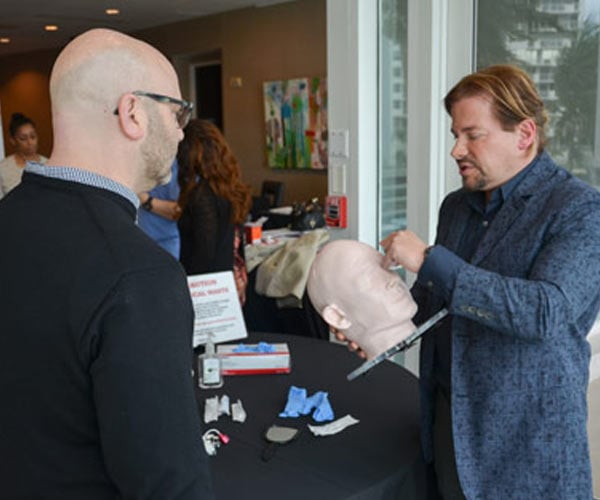Understanding Botox® Mapping: What You Need to Know
By Dr. Stephen Cosentino
PRESIDENT OF EMPIRE MEDICAL TRAINING
Injecting Botox® or other medications derived from botulinum toxin A requires skill and finesse. While it’s easy enough for providers to learn where to inject Botox and which spots to avoid, more is needed for optimal results.
That’s why Botox mapping is important. A Botox map is an individual injection plan customized for the patient’s unique cosmetic complaints, facial anatomy, and desired results.
A good Botox map elevates Botox treatment results from “good” to “amazing.” Here’s how.
Botox Mapping — What It Is & How It Works
Every Botox treatment should begin with a Botox mapping face chart. This is the chart of facial regions and muscle groups where Botox can be injected for cosmetic purposes.
But Botox is indicated for many different cosmetic complaints, and every patient is different. That’s why seasoned Botox injectors develop customized Botox treatment maps before making that first injection.
What Are Botox Injection Patterns?
Each Botox map shows a specific injection pattern that the provider believes will achieve the best results for the patient. This pattern is based on general guidelines for the procedure being performed, then tailored to the patient’s specific needs.
How to Identify Botox Injection Sites
Each approved Botox treatment has its own general injection pattern. This pattern shows the number of injection sites and roughly where each is located on the patient’s face.
To identify the exact location of each injection site in a custom Botox map, providers must:
- Locate the muscle or muscle groups to be treated
- Pinpoint the correct location for each injection within those muscles, based on evidence-based training for the procedure being performed
- Look for obstacles or local contraindications that could reduce efficacy or cause complications, such as fatty deposits or blood vessels
- Determine the proper dosing (in units) for each injection
Examples of Botox Treatment Patterns on the Face
How does Botox mapping work in the real world? Let’s look at Botox treatment pattern examples for three common cosmetic procedures.
Crow’s Feet Area
Treating the fine lines known as crow’s feet typically requires four to eight injections around the corners of the eyes. All target the orbicularis oculi, the muscles that surround the lateral sides of the eyes. Dosing is usually two to four units per injection site.
Forehead Area
The forehead is dominated by the frontalis, a large, flat muscle extending upward from the brows.
Due to this muscle’s size and anatomical variation, forehead Botox maps vary widely, from just four or five injection sites to more than 15 injection sites. Dosing is usually low — one to two units per injection site.
Frown Lines Area
Injections to treat frown lines, or ‘11’ lines, target several muscles in the glabellar area between and above the eyes.
The typical treatment pattern includes five injection sites, with one in the middle of the glabella, two on its edges, and two further along the brow line. Depending on the depth of the lines, dosing ranges from two to six units per site.
Botox Injection Mapping — Final Considerations
As always, Botox providers — and their patients — must be aware of potential side effects for both on- and off-label Botox treatments.
Providers must take the time to complete thorough pre-treatment consultations for every patient. These consultations should produce custom Botox injection maps so that there’s no uncertainty about the course of treatment.
And patients should always work with seasoned medical professionals who’ve completed Botox training with an accredited institution. These providers can’t completely prevent complications, but they’re much likelier to produce a satisfactory outcome.


